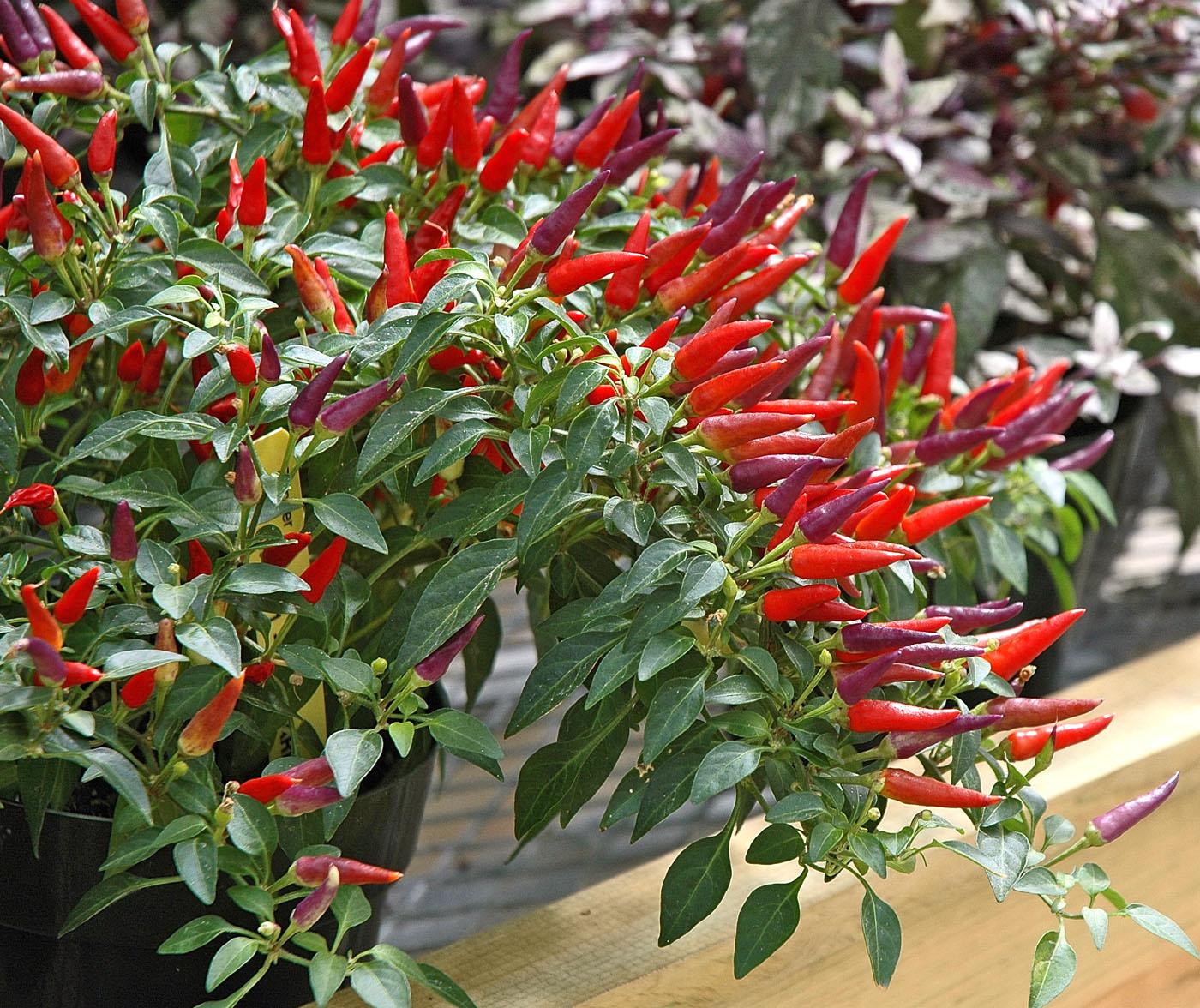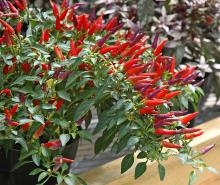Information Possibly Outdated
The information presented on this page was originally released on July 3, 2008. It may not be outdated, but please search our site for more current information. If you plan to quote or reference this information in a publication, please check with the Extension specialist or author before proceeding.
New ornamental peppers catch eyes in landscapes
By Norman Winter
MSU Horticulturist
Central Mississippi Research & Extension Center
The Black Pearl was made famous a couple of years ago as both a pirate ship in the movies and as one of the most intriguing ornamental peppers grown in the landscape.
The same company that brought us the Black Pearl now is bringing us Calico, Purple Flash and Sangria -- three more incredible peppers.
Reportedly, the seeds were available to producers in May, which means you may find them in time for late summer or fall planting. If not, keep your eyes open next spring.
The Black Pearl was famous for its deep purple (almost black) leaves and round, shiny black peppers that aged to a glistening red. Calico and Purple Flash offer variegated foliage that is so striking that flower borders and mixed containers will come alive with color and texture. Like the Black Pearl, both of these can start a fire in your mouth if eaten, so don't do it.
Like a cat, Calico has three colors in its leaves: green, purple and cream. The peppers are shiny and so dark purple they look black. The leaves and branching habit of the Calico really makes it a wonderful addition to any garden or container. Expect it to reach just over a foot tall and around 16 inches wide.
I am growing mine in mixed containers with Super Dwarf Cavendish bananas as the thriller plant, Goldilocks lysimachia as a spiller plant and the Calico as a filler, or mid-level, plant. The purple tones in the leaves and fruit combine well with the chartreuse foliage of the Goldilocks.
Purple Flash is equally colorful. The bright purple in the leaves looked almost iridescent in the sun at our trials recently. A second shade of purple working in the leaves appears to be almost black. The fruit is shiny black, too. Purple Flash has a layered branching habit, making it unique among peppers for the home garden. It reaches 15 inches tall and 21 inches wide.
The last ornamental pepper I want to mention is Sangria. While you are growing the other two mostly for the colorful leaves, it will be this pepper that steals the show. The pepper plant is indeterminate, a word we use with tomatoes that simply means it will produce peppers non-stop. The plants always will be loaded with peppers that are red or purple. Though ornamental, the peppers are not hot if they are eaten. These are a little spreading, reaching 18 inches wide and around 12 inches tall.
Before removing the peppers from their containers, dig the holes in the garden soil. Gardeners know they can plant a tomato deeper than it grew in the container, but you must plant the pepper at the same depth it is presently growing.
Feed your peppers with a complete garden fertilizer, preferably one that is higher in phosphorous such as a 10-20-10. Apply 2 tablespoons per plant at three- to four-week intervals. Dilute, water-soluble fertilizer can be used every other week if preferred or if growing in containers.
Keep plants watered and mulched through the long growing season, and they will provide an unfailing performance.
Ornamental peppers have changed dramatically over the last few years to become real landscape assets. With choices like the Black Pearl, Calico, Purple Flash and Sangria, there is no reason not to use them prominently at your home.









